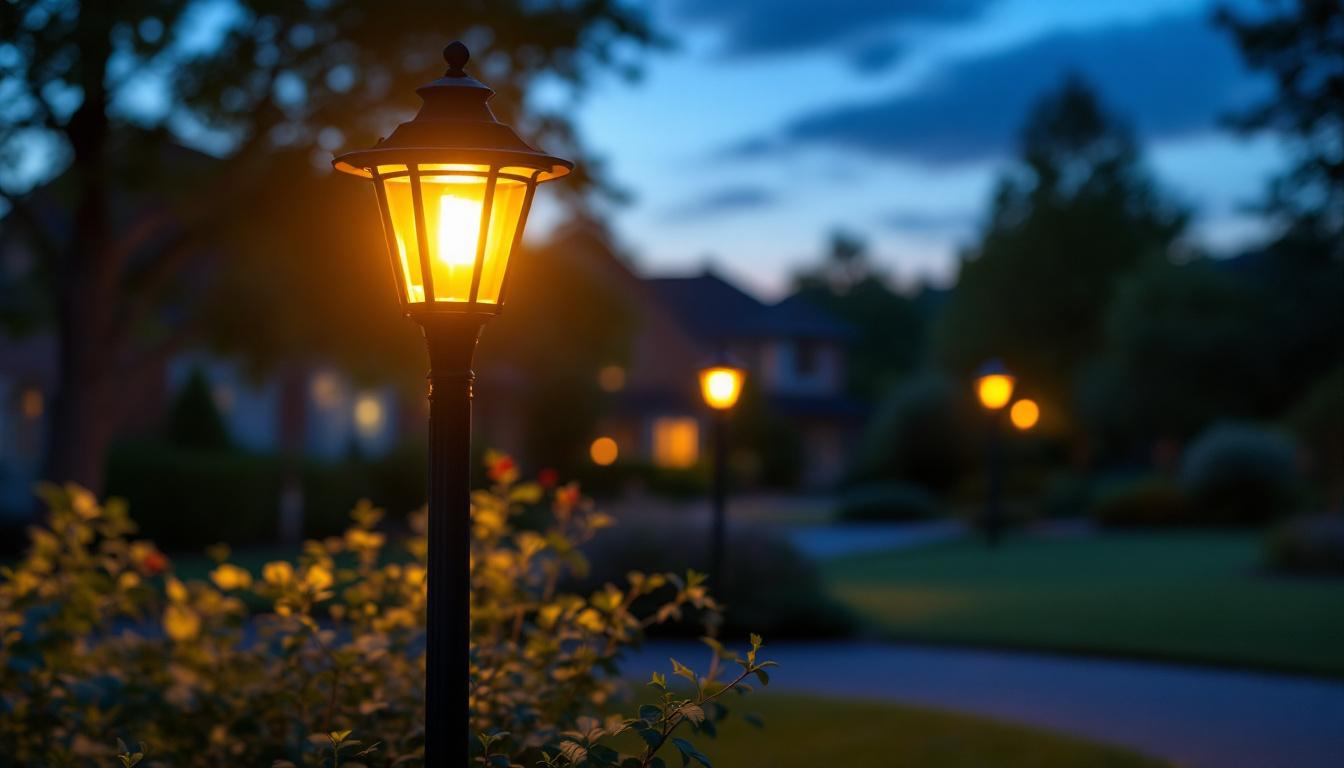
As the demand for energy-efficient lighting solutions continues to rise, MR16 LED bulbs have become a popular choice among lighting contractors and homeowners alike. These versatile bulbs offer a range of benefits, including energy savings, longevity, and a wide array of color temperatures. However, navigating the world of MR16 LED bulbs can be fraught with challenges. This guide aims to help lighting contractors avoid common pitfalls when selecting and installing MR16 LED bulbs.
Before diving into the potential pitfalls, it’s essential to understand what MR16 LED bulbs are and how they differ from traditional options. MR16 refers to a specific size and shape of bulb, characterized by a 2-inch diameter and a multifaceted reflector design. Originally designed for halogen lighting, MR16 bulbs have transitioned into the LED market, providing a more energy-efficient alternative.
One of the primary advantages of MR16 LED bulbs is their energy efficiency. Compared to traditional halogen bulbs, MR16 LEDs consume significantly less power, resulting in lower electricity bills. Additionally, they have a longer lifespan, often lasting up to 25,000 hours or more. This longevity reduces the frequency of replacements, which is a significant advantage for both contractors and clients.
Another benefit is the variety of color temperatures available. MR16 LED bulbs can produce warm, cool, or daylight tones, allowing for customized lighting solutions that can enhance the ambiance of any space. This flexibility makes them suitable for various applications, from residential to commercial settings.
Moreover, MR16 LED bulbs are known for their superior light quality. Unlike traditional bulbs that may emit a harsh or flickering light, MR16 LEDs provide a consistent and stable illumination, which is particularly important in settings such as art galleries or retail spaces where color accuracy is crucial. This quality of light not only enhances the visual appeal of products and artwork but also contributes to a more pleasant atmosphere for both customers and employees.
In addition to their aesthetic benefits, MR16 LED bulbs are also more environmentally friendly. They do not contain harmful substances like mercury, which is often found in other types of lighting, making them a safer choice for both homes and businesses. The reduced energy consumption associated with MR16 LEDs also translates to a smaller carbon footprint, aligning with the growing trend toward sustainability in lighting solutions. As more consumers and businesses seek to reduce their environmental impact, the adoption of MR16 LED bulbs continues to rise, reflecting a broader shift towards greener technologies.
While MR16 LED bulbs offer numerous benefits, there are several common pitfalls that lighting contractors should be aware of to ensure successful installations and satisfied clients.
One of the most significant issues contractors face is the incompatibility of MR16 LED bulbs with existing fixtures and transformers. Many older fixtures were designed for halogen bulbs, which operate at a higher voltage. When replacing halogen bulbs with LED options, it’s crucial to check whether the existing transformer is compatible with LED technology.
Using an incompatible transformer can result in flickering, buzzing, or even complete failure of the LED bulb. To avoid this, contractors should recommend LED-compatible transformers or suggest replacing the entire fixture if necessary. This proactive approach can save time and frustration during the installation process.
The Color Rendering Index (CRI) measures how accurately a light source displays colors compared to natural light. For MR16 LED bulbs, a CRI of 90 or above is generally considered excellent. However, some lower-quality LED bulbs may have a CRI below this threshold, leading to poor color representation.
When selecting MR16 LED bulbs, contractors should prioritize options with a high CRI to ensure that the lighting meets the aesthetic needs of the space. Poor color rendering can be particularly problematic in retail environments or art galleries, where accurate color representation is crucial.
Although LED technology is known for its efficiency, MR16 LED bulbs can still generate heat, especially if they are not adequately ventilated. Overheating can lead to reduced lifespan and performance issues. It’s essential to ensure that the fixtures used for MR16 LED bulbs allow for proper heat dissipation.
Contractors should also consider the wattage of the LED bulbs being used. Using high-wattage bulbs in fixtures not designed for them can exacerbate overheating problems. Always check the manufacturer’s specifications to ensure compatibility and avoid potential issues.
Proper installation is key to maximizing the benefits of MR16 LED bulbs. Following best practices can help ensure that the bulbs perform optimally and that clients are satisfied with their lighting solutions.
Before installation, it’s essential to conduct a thorough assessment of the space where the MR16 LED bulbs will be used. This includes evaluating the existing fixtures, the purpose of the lighting, and the desired ambiance. Understanding these factors will guide the selection of the appropriate bulb type, wattage, and color temperature.
Additionally, considering the layout of the space can help determine the best placement for the bulbs. Proper spacing and positioning can enhance the overall lighting effect and improve functionality.
Wiring is a critical aspect of any lighting installation. When working with MR16 LED bulbs, it’s vital to ensure that the wiring is compatible with the bulbs and transformers being used. This includes checking for any frayed wires, ensuring proper grounding, and verifying that the circuit can handle the load of the new bulbs.
Contractors should also be aware of the potential for voltage drop in longer runs of wiring. If the distance from the transformer to the bulb is too great, it can lead to insufficient voltage, causing flickering or dimming. In such cases, using thicker gauge wire or installing additional transformers may be necessary.
After installation, it’s crucial to test the lighting to ensure everything is functioning as expected. This includes checking for flickering, dimming, or any unusual noises. If issues arise, adjustments may be necessary, such as replacing transformers or repositioning bulbs.
Additionally, contractors should encourage clients to provide feedback on the lighting. This can help identify any areas for improvement and ensure that the final result meets their expectations.
With so many options available on the market, selecting the right MR16 LED bulbs can be overwhelming. However, understanding key features and specifications can simplify the decision-making process.
When choosing MR16 LED bulbs, it’s essential to consider both wattage and lumens. While traditional halogen bulbs typically operate at 50 watts, LED equivalents often use only 7-10 watts to produce the same amount of light. The lumens rating indicates the brightness of the bulb, with higher lumens corresponding to brighter light.
Contractors should assess the lighting needs of the space and select bulbs that provide the appropriate brightness without exceeding the necessary wattage. This ensures energy efficiency while meeting the client’s expectations for illumination.
The beam angle of an MR16 LED bulb determines how the light is distributed in a space. A narrow beam angle (e.g., 15 degrees) is ideal for spotlighting or accent lighting, while a wider beam angle (e.g., 60 degrees) is better suited for general illumination.
Understanding the intended use of the lighting will help contractors choose the appropriate beam angle for their projects. This consideration can significantly impact the overall effectiveness of the lighting design.
Many clients prefer dimmable lighting options for added versatility and ambiance. However, not all MR16 LED bulbs are compatible with dimmer switches. When selecting bulbs, it’s essential to verify that they are labeled as dimmable and to ensure compatibility with the specific dimmer switch being used.
Using non-dimmable bulbs with dimmer switches can lead to flickering and other performance issues. Therefore, contractors should take the time to educate clients about their options and ensure that the selected bulbs meet their needs.
Once installed, maintaining MR16 LED bulbs is crucial for ensuring their longevity and performance. Proper care can prevent issues and extend the life of the bulbs.
Dust and debris can accumulate on MR16 LED bulbs over time, reducing their brightness and efficiency. Regular cleaning is essential to maintain optimal performance. Contractors should advise clients on how to safely clean the bulbs without damaging them.
Using a soft, dry cloth is often sufficient for removing dust. For more stubborn grime, a damp cloth with mild soap can be used, but care should be taken to avoid getting moisture into the fixture or electrical components.
Encouraging clients to monitor the performance of their MR16 LED bulbs can help identify potential issues early on. If bulbs begin to flicker, dim, or change color, it may indicate a problem with the fixture, transformer, or the bulb itself.
Contractors should provide clients with guidance on what to look for and when to seek professional assistance. This proactive approach can prevent more significant issues down the line and ensure client satisfaction.
MR16 LED bulbs offer a wealth of benefits for lighting contractors and their clients, from energy efficiency to versatility in design. However, avoiding common pitfalls is essential for ensuring successful installations and satisfied customers. By understanding the unique characteristics of MR16 LED bulbs, conducting thorough assessments, and following best practices for installation and maintenance, contractors can navigate the challenges of this technology with confidence.
Ultimately, the goal is to provide clients with lighting solutions that not only meet their needs but also enhance their spaces. By staying informed and proactive, lighting contractors can ensure that their projects shine brightly, illuminating the path to success in the ever-evolving world of lighting design.
Ready to elevate your lighting projects with the efficiency and quality of MR16 LED bulbs? Look no further than LumenWholesale, where we provide lighting contractors with the best in spec-grade lighting products at wholesale prices. Our commitment to cutting out the middleman means you get the most competitive rates without sacrificing quality. With our vast selection that meets rigorous industry standards, you can trust that your installations will shine with reliability and performance. Plus, with free shipping on bulk orders, you can stock up on premium lighting solutions without any hidden fees. Don’t compromise on quality or cost. Wholesale Lighting at the Best Value is just a click away—experience the LumenWholesale difference today.

Discover the best outdoor solar mini lights, compare top options, and learn what lighting contractors should choose for energy-efficient, durable, and cost-effective outdoor lighting solutions..

Discover the future of illumination with modern solar-powered outdoor lighting.

Discover the essential checklist for lighting contractors focusing on plug outlet installations.

Discover the frequent pitfalls lighting contractors encounter with lamp post outdoor lighting.